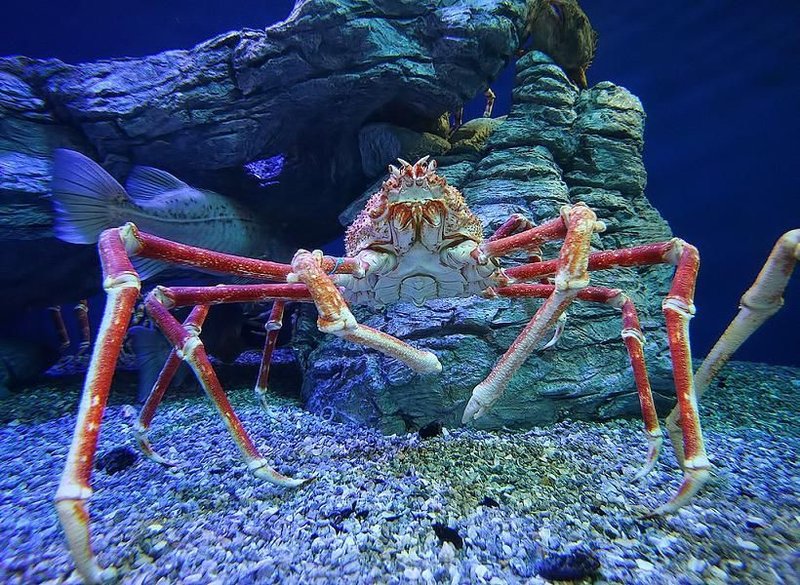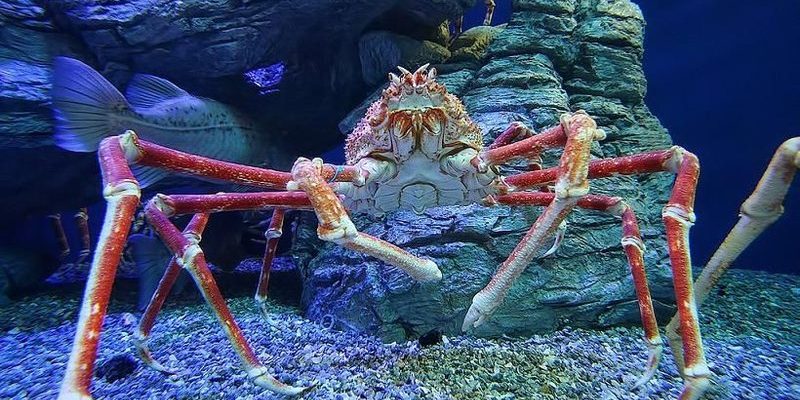
So, what exactly helps these impressive crustaceans thrive? From their tough shells to their unique hunting techniques, king crabs have developed features that enable them to navigate their habitat, find food, and avoid predators. In this article, we’ll dive deep into the remarkable adaptations of king crabs and explore how they manage to flourish in the underwater world. Grab a cup of coffee, and let’s get started!
1. Hard Exoskeleton: Nature’s Armor
One of the most notable adaptations of king crabs is their hard exoskeleton, which serves as a robust shield against potential threats. Unlike our skin, which can heal and grow back, a crab’s outer shell is a protective armor that must be shed and replaced as they grow. This process, called molting, allows the crab to maintain its size while also renewing its defenses.
When a king crab molts, it often hides in a safe spot to avoid predators. Imagine being a teenager who just got a new outfit, wanting to show it off but also fearing the old one didn’t fit quite right anymore. That’s how these crabs feel during their molting phase—they’re vulnerable, but the payoff is worth it. A new and more robust exoskeleton helps them be better equipped for challenges ahead.
The tough surface of their shell is not just for protection, though; it also plays a role in their buoyancy. This adaptability helps them maintain a stable position in the water, allowing them to move efficiently through their environment.
2. Powerful Claws: Tools of the Trade
If you’ve ever seen a king crab, you probably noticed their impressive claws. These aren’t just for show; they are crucial for their survival. King crabs use their claws for hunting and feeding, as well as for defense. The strength of these claws is surprisingly powerful, enabling them to crush hard-shelled prey like clams and snails.
Here’s the thing: the shape and size of their claws can vary based on their diet and environment. Some king crabs develop larger claws to tackle bigger prey, while others may have smaller, more nimble claws for delicate tasks. This adaptation helps them maximize their feeding opportunities and thrive in different ocean habitats.
Think of it like having a toolbox; depending on the job at hand, you’ll need different tools. King crabs have a built-in toolkit to adapt to various challenges in their underwater world.
3. Efficient Gills: Breathing Underwater
Like fish, king crabs breathe underwater using gills. This adaptation is vital for their survival. Their gills are specially designed to extract oxygen from the water, allowing them to thrive even in deep, dark environments where oxygen levels might be lower.
You might be wondering how this works. When water flows over their gills, tiny blood vessels absorb oxygen and release carbon dioxide. This efficient system ensures that king crabs can extract as much oxygen as possible—like having a high-tech air filter in their underwater home.
Moreover, the gills are also protected by the shell, keeping them safe from debris and predators. This ability to breathe efficiently in various environments gives king crabs a distinct advantage, allowing them to inhabit diverse ocean depths.
4. Camouflage: Blending In
Have you ever watched a nature documentary where animals blend into their surroundings? King crabs have mastered the art of camouflage. Their coloration can vary based on their environment, helping them blend in with the ocean floor or rocky crevices. This is especially useful when avoiding predators or sneaking up on prey.
Some species of king crabs can even change their color slightly, which gives them an edge when it comes to survival. Just picture an undercover agent whose appearance can shift to fit different missions—that’s the king crab in action!
This sneaky adaptation is crucial, as their primary predators include larger fish and mammals. By staying hidden, these crabs can go about their business of feeding and reproducing without constantly being on high alert.
5. Strong Legs: The Backbone of Mobility
King crabs are not just about their claws; their legs are equally impressive. They have long, sturdy legs that help them navigate through the ocean floor. This adaptation allows them to roam over rocky surfaces and coral reefs, searching for food while also avoiding dangers like swift currents or predators.
You might think of their legs as a crab’s own version of a high-performance vehicle. With powerful legs, they can move quickly when necessary, or they can take their time to conserve energy while foraging for food. This versatility is essential for thriving in various environments, from shallow coastal waters to deeper ocean floors.
Moreover, their legs can bear a significant amount of weight, allowing them to carry heavy shells or food as they move. This strength is critical when they need to scuttle away from threats or compete with other crabs.
6. Diverse Diet: Omnivorous Eating Habits
King crabs are omnivores, meaning they eat both plants and animals. This diverse diet is a significant adaptation that allows them to thrive in different environments. They dine on various things, such as mollusks, fish, algae, and even decaying organic matter—it’s a buffet down there!
This adaptability in diet not only ensures they have enough food year-round but also allows them to adjust based on what’s available. If one type of prey becomes scarce, they can easily shift to munching on something else.
Imagine being at a potluck where you can eat whatever you want—king crabs have the ultimate buffet experience in the ocean! Their diverse eating habits help keep them healthy and well-fed, which is vital for survival in the underwater ecosystem.
7. Reproductive Strategies: Ensuring Survival
When it comes to reproduction, king crabs have some fascinating strategies. During mating season, males will often compete for females, showcasing their size and strength. Once a female selects a mate, she carries the fertilized eggs on her abdomen until they hatch—often while still seeking food and evading predators.
This adaptation ensures that a large number of eggs have the chance to survive, as the female crab can protect them while still being mobile. It’s like a juggling act, balancing motherhood with the need to survive in the wild.
Once the eggs hatch, the young crabs, called zoea, have a challenging journey ahead. They float in the ocean as plankton, relying on ocean currents to help them find food and avoid danger. This strategy maximizes their chances of reaching suitable habitats where they can grow into adult crabs.
8. Sensory Adaptations: Navigating the Dark
In the depths of the ocean, light is scarce, so king crabs rely heavily on their other senses. Their long, sensitive antennae help them detect food, predators, and potential mates in the murky water. These adaptations are crucial for survival in an environment where sight is not always an option.
These antennae can sense vibrations and changes in the water around them, acting like a radar system. It’s akin to having a sixth sense—an extra layer of awareness that helps them navigate and thrive in the dark depths of the ocean.
Let’s not forget their ability to detect chemical cues in the water. This capability helps them know when food is nearby or when danger lurks, ensuring they can make quick decisions to stay safe and well-fed.
In conclusion, the survival of king crabs in their underwater homes stems from a range of amazing adaptations. From their hard exoskeletons and strong claws to their effective breathing systems and sharp senses, everything has evolved to keep them thriving in an often harsh environment. Next time you see one of these remarkable creatures, think about all the clever ways they’ve adapted to life below the waves. They truly are champions of the ocean!

